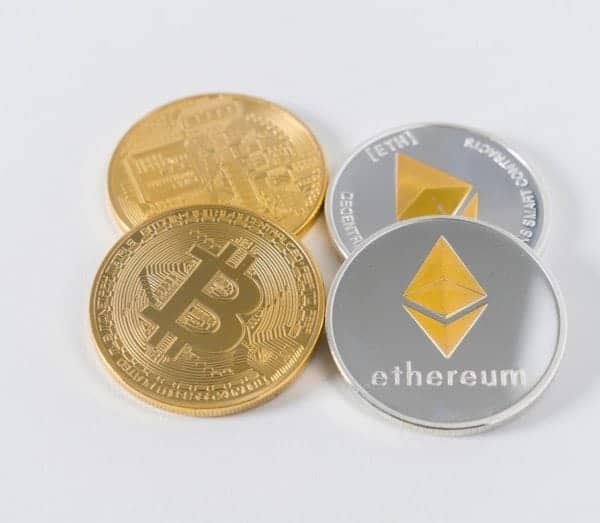We recently caught up with Pankaj Balani, CEO at Delta Exchange, an established digital assets derivatives trading platform.
Delta offers cryptocurrency futures and derivatives trading across Bitcoin and major altcoins with up to 100x leverage.
The company aims to support the ongoing growth and development of the cryptocurrency financial system by developing a “highly-liquid and trusted” derivatives exchange that serves retail and institutional traders.
Delta Exchange features a powerful matching engine, a user-friendly interface, advanced order types and fast APIs. The exchange provides access to an institutional-grade trading platform developed for the nascent crypto-asset markets.
Crowdfund Insider: Please explain how the Bitcoin Cash (BCH) network has been impacted following the halving (both technical and economic).
 Pankaj Balani: “Bitcoin Cash completed its network halving on April 9th, cutting its token issuance rate from 12.5 to 6.25 BCH per block. Since the halving, the price of BCH has fallen roughly 15% – from $265 to $225 – showing a continued downward trend since halving.
Pankaj Balani: “Bitcoin Cash completed its network halving on April 9th, cutting its token issuance rate from 12.5 to 6.25 BCH per block. Since the halving, the price of BCH has fallen roughly 15% – from $265 to $225 – showing a continued downward trend since halving.
The hash rate of the BCH blockchain has dropped rapidly post the halving, down as much as 65% to a value not seen since March 2019. This has likely occurred as miners have shut their operations and shifted to the Bitcoin (BTC) network, which is currently offering double the reward. Just after halving, the block time on BCH blockchain increased from 10 minutes to over 2 hours. Though the block frequency has improved now, the block size continues to remain low at 20 KB.
The lack of activity and the eroding hash rate signal that the Bitcoin Cash network is not decentralized enough. This does not bode well for BCH price. Bitcoin Cash has underperformed Bitcoin this year and we expect this underperformance to continue going forward.”
Crowdfund Insider: Delta Exchange recently launched BTC/USDT futures contracts. Please explain how this product can help traders take advantage of the opportunities in the digital asset market.
Pankaj Balani: “The key feature of the linear BTC/USDT perpetual swap is that it offers settlement in USDT, meaning that profits and losses are realised in USDT terms. This is in sharp contrast to the existing BTC/USD inverse perpetual swap, which is settled in BTC. In case of inverse contracts, if a trader makes a profitable trade their count of BTC increases and should they make losses they lose some of their Bitcoins.
The problem with settlement in BTC is two fold. Firstly, if the price of BTC starts to fall then despite making a profitable trade the trader might still lose in absolute value terms. Secondly, inverse contracts are complex to understand and hence there is a fair bit of inertia for traders who are used to trading in traditional markets.
As the crypto derivatives space grows beyond BTC futures and derivatives on other altcoins start to become popular, USDT settlement will become imperative and commonplace. It is rather cumbersome for traders to settle BTC/USD futures in BTC, ETH/USD futures in ETH and so on. Whereas with linear contracts traders can trade futures on any coin and have settlement in USDT.”
Crowdfund Insider: The Bitcoin (BTC) halving is approaching, so tell us how you think this will affect the cryptocurrency (technical and economic).
Pankaj Balani: “The third Bitcoin halving is quickly approaching and is set to take place in a month’s time. Halvings are typically seen as bullish, with traders often theorizing that a decreasing supply is inherently positive for the price.
From a technical standpoint we are likely to experience a short-term drop (or normalisation) in the hash-rate of the Bitcoin network as a fraction of miners switch their focus back towards networks like Bitcoin Cash and Bitcoin SV. Bitcoin mining activity is likely to fall, both in relative and absolute terms, as mining becomes unprofitable for certain miners. However, the strength and magnitude of the BTC network is likely to absorb any drastic fluctuations in the mining activity.
From a price perspective, if the past two BTC halvings are anything to go by then halving has largely been a positive catalyst for Bitcoin price in the medium term. We have seen Bitcoin gain an upward trajectory 3-6 months post halving and commence a fresh bull run. Given that in 2 quarters from here, worries over coronavirus would have largely subsided and Bitcoin all time high would be about 3 years behind us, it is not difficult to imagine a bullish scenario for Bitcoin.”
Crowdfund Insider: What are your thoughts about Ethereum’s (ETH) performance this year, and how important has it become to the larger crypto asset ecosystem (according to you).
Pankaj Balani: “Ethereum is a proven asset within the cryptocurrency ecosystem and its continued network growth is no surprise to anyone. Ethereum has the largest developer community and it has established itself as the blockchain of choice for smart contract development.
Over the past month, ETH price is up roughly 60% and does not show signs of slowing down. This is supported by promising growth on the underlying blockchain. The Dapp transaction activity on Ethereum has grown 80% year-on-year for Q1 2020, with a total transaction volume of close to $8billion.
There has also been a lot of interest in the DeFi space over the last 12 months and we have seen participation from hedge funds, crypto native companies, players from traditional markets and many others. Though the DeFi lending space has faced some challenges recently, such incidents are part of the evolution process and will only help the ecosystem improve in the long run.
We expect the Ethereum community to keep growing stronger during the remainder of 2020 and the Ether blockchain to further cement its position as the go-to blockchain for decentralised developer activity. The more the Ethereum ecosystem expands the better it is for ETH price.”
Crowdfund Insider: Compliance is now a key focus area for digital asset exchanges. Please tell us about what your exchange has done to ensure that you’re following the relevant regulatory guidelines for trading cryptocurrencies.
Panjak Balani: “On Delta Exchange, we take compliance seriously. Though we allow no KYC for customers who trade with small amounts, we do KYC for those who look to withdraw amounts north of 2 BTC on a daily basis.
Furthermore, we restrict access to users from certain countries such as the United States, a few countries in the Middle East, Africa etc. A detailed list is available on our website. We also focus on monitoring transactions on blockchain to make sure that we are not receiving funds from any objectionable sources.”


